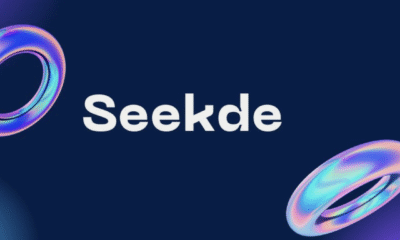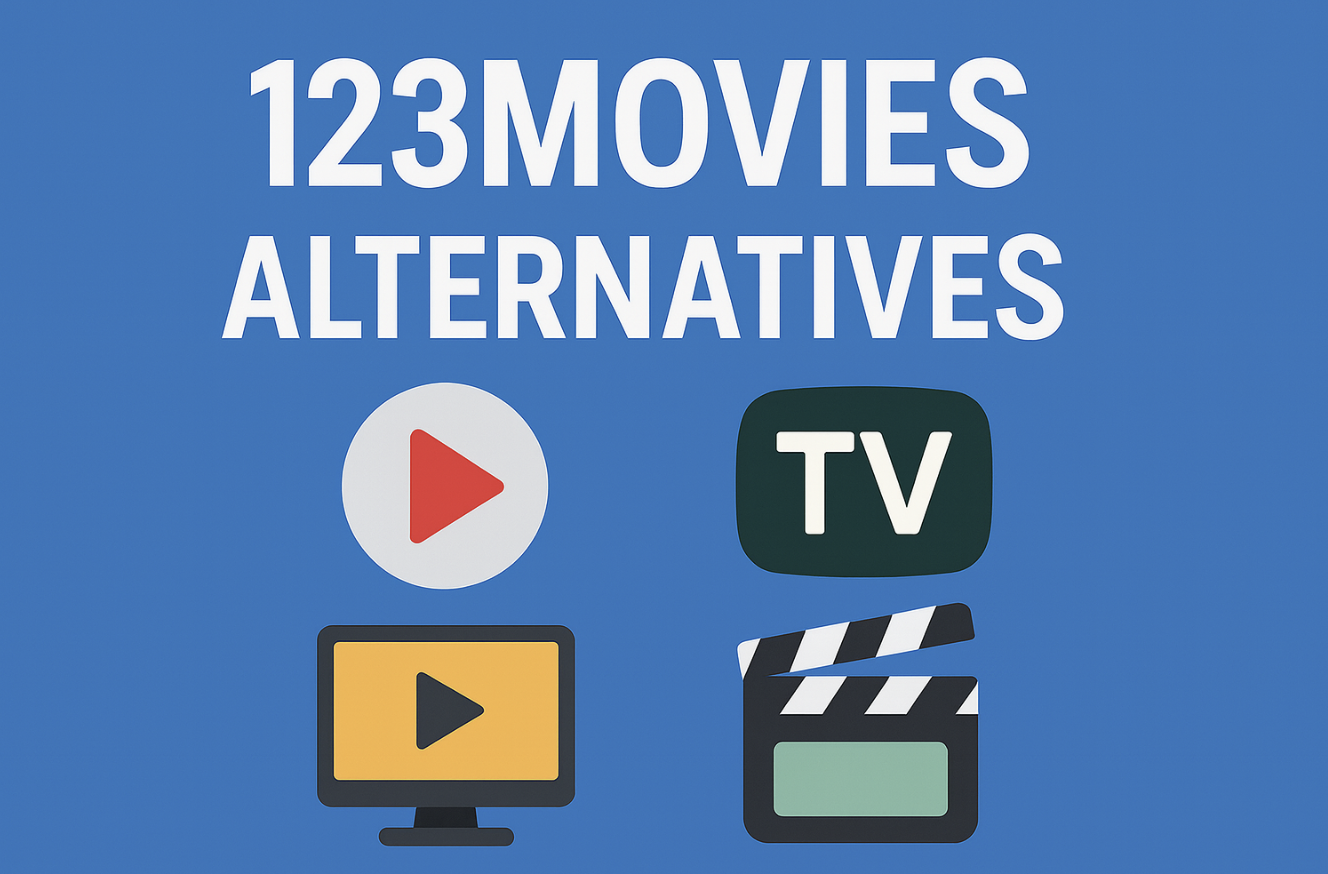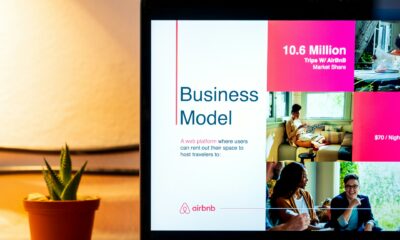Guide
Acamento: The Rising Power of Modern Digital Innovation

In the fast-paced world of digital transformation, new concepts and terms emerge regularly. Among them, Acamento is gaining traction as a futuristic framework—one that blends innovation, adaptability, and sustainable growth. While still relatively new in mainstream discourse, Acamento is fast becoming an influential idea that shapes how businesses, designers, and technologists envision the future.
This article digs deep into what Acamento really means, how it works in practice, its benefits and challenges, and why it may be a defining paradigm in the digital era.
What Is Acamento?
Acamento is not a single piece of software or tool; rather, it is a philosophical, strategic, and methodological framework for guiding digital innovation. It emphasizes continuous evolution, user-centric design, and systemic adaptability over fixed endpoints. In some writings, Acamento is described as the intersection of acceleration + momentum within digital systems, steering innovation not merely as a one-time jump but as sustained movement. technicallyblogs.co.uk
In simpler terms:
-
It seeks to bridge legacy systems and emergent technologies so that organizations don’t have to throw out what they have built but can “overlay” adaptable layers. technicallyblogs.co.uk+1
-
It prioritizes modularity, feedback loops, and continuous iteration rather than static release cycles. technicallyblogs.co.uk+1
-
It embeds ethical guardrails, transparency, and human oversight into innovation, to ensure progress doesn’t override trust or safety. technicallyblogs.co.uk
Because Acamento is more of a mindset or compass than a blueprint, different organizations interpret it uniquely based on their domain, scale, and maturity.
The Core Pillars of Acamento
To better understand Acamento, here are its fundamental pillars:
-
Adaptability & Modularity
Systems must evolve in modular fashion. Rather than monolithic upgrades, Acamento promotes building layers that can flex, grow, or be replaced without collapsing the entire stack. technicallyblogs.co.uk+1 -
User-Centered Iteration
Products and processes under Acamento remain in open dialogue with users. Every release is informed by real usage, feedback, and predictive modeling. technicallyblogs.co.uk+2daretobenoticed.com+2 -
Automation with Intelligence
Automation—backed by AI/ML—is not a rigid script. Instead, it learns, adapts, and involves decision support rather than pure autonomy. technicallyblogs.co.uk+2daretobenoticed.com+2 -
Security & Ethics by Design
Digital innovation under Acamento must integrate privacy, fairness, and accountability from day one—not as an afterthought. Ethical “brakes” or triggers can be built into adaptive systems. technicallyblogs.co.uk -
Sustainability & Efficiency
Resource optimization, low-cost scaling, and environmental mindfulness are embedded in decision-making, not bolted on later. daretobenoticed.com+1
Through these pillars, Acamento becomes more than a buzzword—it is a holistic lens through which organizations can modernize intelligently.
Why Acamento Matters Today
You might ask: we’ve had “digital transformation,” “agile,” “lean startup,” etc. Why is Acamento being singled out as the rising power now?
-
Transformation fatigue has set in. Many companies tried “big bang” overhauls and failed. Acamento offers a more sustainable, incremental path.
-
Rapid technology cycles demand flexibility—today’s best solution might be obsolete in 18 months. Acamento accepts change as the constant.
-
User expectations are rising. People expect systems to update, self-tune, and adapt naturally. Acamento speaks to this expectation.
-
Regulatory and ethical demands have escalated (privacy, bias, security). A framework that builds ethics into innovation is timely.
-
Competitive differentiation: Since Acamento is still novel, early adopters have the chance to claim domain authority, especially in niches. (In fact, content that uses “Acamento” now may rank more easily due to low competition.)
Thus, Acamento is well-positioned as a paradigm designed for both the maturity of digital ecosystems and the unpredictability of emerging tech.
Applications of Acamento Across Industries
Because Acamento is a meta-framework, it can be applied in multiple sectors. Below are some illustrative examples:
| Industry / Domain | Use Cases & Benefits |
|---|---|
| Enterprise / Legacy Systems | Wrap older databases and services with adaptable “shells” so that features can evolve without rearchitecting everything. |
| Software & SaaS | Continuous deployment pipelines, A/B testing, predictive personalization, runtime adaptation to load. |
| Cloud & Infrastructure | Auto-scaling infrastructure that doesn’t just respond to traffic but anticipates patterns; modular microservices. |
| IoT & Edge Devices | Devices that adjust behavior over time, adapt to changing network conditions, local intelligence plus cloud coordination. |
| Healthcare / Fintech / Regulated Domains | Embedding auditability, explainability, security, and compliance into continuously evolving systems. |
| Design / UX | Interfaces that respond to context, preferences, and feedback—not static layouts but dynamic ecosystems. |
For example, a fintech startup could implement Acamento by building a core transaction engine but layering modular risk engines, personalization models, and feedback loops that evolve as user behavior changes.
Benefits of Adopting Acamento
Organizations that successfully adopt Acamento can expect a range of benefits:
-
Faster time to value: Because new features can be layered or appended incrementally, organizations see returns sooner.
-
Resilience & flexibility: Systems don’t break when change happens—adjustment happens organically.
-
Better alignment with users: Continuous feedback loops keep products relevant and user-centric.
-
Cost efficiency: You avoid costly rewrites and large migrations by evolving intelligently.
-
Stronger competitive edge: Innovating with agility and user sensitivity becomes a differentiator.
-
Ethical robustness: Built-in guardrails can prevent runaway automation or bias before they emerge.
In short, Acamento helps organizations become living systems—able to sense, respond, and grow rather than being static artifacts.
Challenges & Risks in Embracing Acamento
No paradigm is without challenges. Organizations pursuing Acamento must navigate:
-
Cultural resistance
Employees and leadership may resist perpetual change, especially in traditional industries. -
Technical debt
Legacy systems might not be modular enough; overlaying new layers can become messy without disciplined architecture. -
Governance complexity
Adaptive systems must have clear oversight. If left unchecked, they can drift into unintended behavior. -
Resource constraints
Continuous iteration demands ongoing investment—budgeting, talent, monitoring, and feedback systems. -
Over-optimization
There’s a risk of chasing agility so much that long-term consistency or stability is sacrificed.
The key is balance: disciplined but flexible, structured yet open, innovative but grounded.
How to Begin with Acamento
For teams or organizations that want to adopt Acamento principles, here is a step-by-step roadmap:
-
Baseline & audit
Map your current architecture, processes, and pain points. Identify which parts are rigid or brittle. -
Define a minimal Acamento pilot
Choose a small, non-critical module or feature to apply Acamento principles (modularity, feedback loops, adaptability). -
Embed feedback and monitoring
Build instrumentation from day one. Collect behavioral data, error logs, user inputs. -
Iterate in micro-cycles
Release small updates, test, evaluate, adjust. Avoid big-bang launches. -
Scale carefully
As the pilot proves stable, expand Acamento methods to adjacent features or systems. -
Institutionalize culture
Encourage experimentation, psychological safety, cross-functional collaboration, and continuous learning. -
Govern & safeguard
Create oversight mechanisms, trigger points, rollback protocols, and audit trails. -
Document & share
Maintain clear documentation of evolving systems to prevent drift and knowledge silos.
By treating Acamento adoption as a transformation rather than a migration, organizations can manage risk while unlocking innovation.
Real-World Inspirations & Resources
Though still emergent, the concept of Acamento has begun appearing in digital thought leadership. For instance:
-
TechnicallyBlogs published a detailed dissection of how Acamento acts as a digital framework of transformation and strategy. technicallyblogs.co.uk
-
Another article, Acamento: Revolutionizing Digital Transformation Across Industries, explores use cases in software, cloud, and IoT. daretobenoticed.com
-
For a contrast, some think-pieces (such as this one on Contracorners) explore Acamento in branding, culture, and symbolism beyond pure tech. Contra Corners
These resources can help you deepen your understanding and apply Acamento in domain-specific contexts.
SEO & Digital Positioning: Why You Should Use “Acamento”
From an SEO perspective, “Acamento” offers unique advantages:
-
Low competition: Because the term is still niche, content optimized around Acamento has better chances to rank high.
-
Keyword flexibility: You can pair Acamento with terms like “digital innovation,” “adaptive systems,” “ethical AI,” “modularity framework,” etc.
-
Thought leadership potential: Being early means you can shape how “Acamento” is defined, used, and debated in digital communities.
-
Linkability: Other writers and researchers are likely to reference Acamento content, boosting your authority and backlinks.
If you are building a blog, product site, or consultancy around next-gen digital transformation, anchoring on “Acamento” gives you a head start in carving a niche.
Future Outlook: Where Acamento Could Go Next
Looking ahead, Acamento seems poised to influence:
-
Quantum & spatial computing: As computation gets more complex, adaptive frameworks will be key to bridging classical and quantum layers. technicallyblogs.co.uk
-
Brain–computer interfaces and neuro-digital systems: Continuous feedback, adaptation, and human-aligned guardrails will matter. technicallyblogs.co.uk
-
Augmented Reality / Mixed Reality: Environments that shift in real time based on context may reflect Acamento-style design. technicallyblogs.co.uk
-
Sustainability-driven tech: Green AI, circular systems, and resource-optimized models will likely align with Acamento’s ethos.
As digital ecosystems become more fluid, the pressure to embed responsiveness, ethics, and evolution into architectures will only increase. In that environment, Acamento—if refined, debated, and matured—could become a foundational paradigm.
Conclusion
Acamento is more than a trend—it is a forward-looking model for how innovation should proceed in a complex, unpredictable world. It calls for adaptability over fixed planning, modular construction over monolithic systems, feedback loops over static release cycles, and built-in ethics over afterthought compliance.
Guide
Is Seekde the Right Solution for Your Business? An In-Depth ROI Analysis
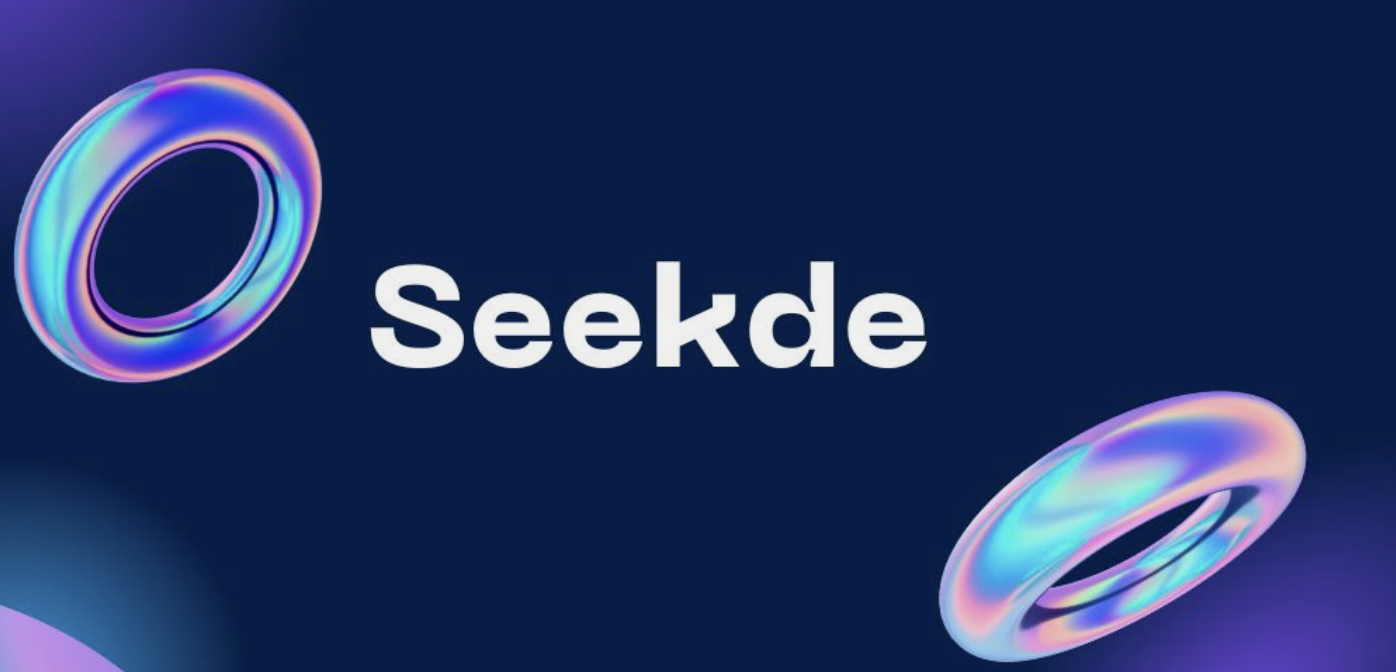
If you have been paying attention to the latest shifts in business technology, you have likely heard the buzz surrounding seekde in the corporate world. It promises to be more than just a search tool; it claims to be a complete ecosystem for knowledge discovery and workflow automation. But for a prudent business leader, the real question is not about hype—it is about the Return on Investment (ROI).
In this report, we act as your dedicated investigative team. We will strip away the marketing fluff to determine if seekde is a smart financial move or just another subscription to cancel next year. By analyzing time savings, software consolidation, and productivity metrics, we will help you decide if this platform earns its place in your tech stack.
What is Seekde Actually?
Before calculating value, we must define the asset. Think of seekde not as a standard search engine, but as a digital “knowledge loom.” Traditional search engines give you threads of information (links), leaving you to weave them into a fabric (answers).
Seekde does the weaving for you. It uses advanced Artificial Intelligence to:
- Contextualize Data: It understands *why* you are searching, not just *what* you typed.
- Integrate Workflows: It connects with your existing tools like Slack or Trello to find internal answers.
- Predict Needs: It suggests relevant data before you even realize you need it.
For a business, this means the end of “tab fatigue.” Instead of opening twenty tabs to research a market trend, your team gets a synthesized, verifiable answer in seconds.
The Hard Numbers: Calculating the ROI of Seekde
When we talk about ROI, we often look for hard currency. With seekde, the financial return comes primarily from two sources: Time Reclamation and Stack Consolidation.
Turning Time Into Money
Let’s use a hypothetical scenario. Imagine a mid-sized marketing team of 10 people. The average employee spends roughly 20% of their week just searching for information—tracking down files, researching competitors, or finding old emails.
If seekde reduces that search time by half, you effectively gain back 10% of your work week. For a team with an average salary of $60,000, that is $60,000 in recovered productivity per year.
This is not “soft” money; these are billable hours or creative brainstorming sessions that were previously lost to the void of inefficient searching.
The “Subscription Diet” Effect
Modern businesses are bloated with software. You might have one tool for project management, another for internal wikis, and a third for market research. Seekde often functions as a central hub that can replace or streamline these fragmented tools.
- Eliminate Redundancy: If you can drop a premium internal search tool or a standalone market intelligence subscription, the cash savings are immediate.
- Lower Training Costs: diverse tools require diverse training. A single, intuitive interface reduces the onboarding burden on HR.
Analyzing the Features: Does Seekde Deliver?
To understand if the price tag is justified, we must audit the features. A tool is only as valuable as its utility in the trenches of daily work.
Smart Search vs. Traditional Search
Most employees are used to keyword matching. If they type “Q3 Report,” they get every file with “Q3” in the name. Seekde operates on *intent*.
If a manager asks, “How did we perform in Q3 compared to Q2?”, the platform pulls data from the Q3 report and the Q2 report and presents a comparison. It acts like a junior analyst rather than a file cabinet.
Data Exploration (“De”)
The “de” in seekde stands for Data Exploration. This feature is the differentiator for power users. It allows teams to visualize complex datasets without needing a data scientist.
For example, a sales lead can upload a messy CSV file of customer leads. The platform can instantly organize it, highlight high-value targets, and spot regional trends. This feature alone can save hours of manual Excel work every week.
Soft ROI: The Hidden Benefits of Seekde
Not every benefit fits neatly into a spreadsheet. However, these “soft” returns often determine long-term company health.
Reduced Cognitive Load is a major factor. When employees struggle to find information, they get frustrated. This frustration leads to burnout. By making information retrieval effortless, you preserve your team’s mental energy for high-value problem solving.
Better Decision Velocity is another intangible asset. In business, speed is a weapon. If your competitor takes three days to assess a market shift, and your team uses seekde to do it in three hours, you win. You cannot easily put a dollar sign on speed, but you can certainly see its impact on market share.
Integration Capabilities
A standalone tool creates silos. A robust solution breaks them down.
- Seamless Connection: It links with CRMs, email clients, and cloud storage.
- Security First: It ensures that sensitive internal data remains within the company walls, unlike open AI tools like ChatGPT.
Implementation: Is Your Team Ready for Seekde?
Buying the software is the easy part. Getting your team to use it is the challenge. The “learning curve” is often where ROI goes to die.
The Adoption Hurdle
Technologically, the platform is user-friendly. However, it requires a cultural shift. Employees are used to “Googling” things or digging through folders. Training them to “ask” the platform complex questions takes time.
Recommendation: If you invest, appoint a “Champion” within your office. This person should master the advanced features and show others the shortcuts. Without this internal advocate, your expensive software might sit collecting digital dust.
Conclusion: The Final Verdict on Seekde
So, is seekde the silver bullet for your business efficiency?
If your team spends hours drowning in data, struggling to find internal documents, or paying for too many single-use tools, the answer is likely yes. The hard cost savings from productivity gains alone often justify the license fees within the first quarter.
However, if your business is small and your data is already well-organized, the advanced “Data Exploration” features might be overkill.
The Bottom Line: Treat this investment as a hire, not a purchase. Seekde is effectively a digital employee that works 24/7, never sleeps, and remembers everything. For most modern enterprises, that is an employee worth hiring.
Guide
What Really Happens Up There: A Simple Guide to Roof Care

Why Roof Care Matters More Than Most Homeowners Realize
Most people barely think about their roof until something goes wrong, yet it is one of the hardest working parts of the home. It handles sun, rain, snow, wind and temperature swings every single day. Roof care is not complicated, but it is essential for protecting your home’s value and comfort. A well maintained roof lasts longer, looks better and prevents costly issues inside the home. Many homeowners look for guidance from a Manhattan Ny Contractor who understands how different materials age, how weather affects performance and which maintenance steps give the biggest return. Taking care of your roof is not just a seasonal task. It is a year round responsibility.
Understanding the Roof as a Complete System
A roof is more than its surface. It includes layers that work together to protect your home. Shingles, underlayment, flashing, vents and gutters all play a role in how well the system performs. When one part weakens, the entire structure becomes vulnerable. This is why inspections are important. They reveal early signs of wear, such as cracked shingles or loose seals, long before water reaches the interior. A Manhattan Ny Contractor can help homeowners understand how each component contributes to a strong roof and what to watch for each year.
The Role of Cleaning in Roof Maintenance
Cleaning is one of the simplest yet most overlooked parts of roof care. Over time, leaves, branches and dirt settle on the surface, holding moisture and encouraging moss or algae growth. These elements weaken the roof and create dark streaks that make the home look older. A proper cleaning removes buildup so the materials can breathe and dry naturally. Clearing debris also reduces weight and prevents water pools from forming. Roof surfaces stay healthier longer when cleaned at least once a year. A clean roof also allows for easier detection of damage because imperfections become visible.
Why Small Repairs Should Never Be Delayed
Minor roof problems quickly grow into major repairs if ignored. A loose shingle, lifted nail or small gap in flashing might seem harmless, but water only needs a tiny opening to seep inside. Once moisture reaches wood framing or insulation, damage spreads before anyone notices. Making small repairs as soon as they appear is the best way to protect your home. This includes replacing missing shingles, sealing gaps and tightening loose elements. A Manhattan Ny Contractor can perform these repairs safely and ensure that materials match the existing roof for a seamless finish.
The Importance of Ventilation and Airflow
Proper ventilation keeps roofs healthy by balancing temperatures inside the attic. When hot air becomes trapped, shingles age faster and insulation deteriorates. Moisture also builds up, creating conditions for mold or wood rot. Good airflow prevents these issues by allowing hot, humid air to escape. Soffit and ridge vents work together to maintain a steady cycle of air movement. This helps the roof last longer and makes the home more energy efficient. Ventilation is one of the most effective but least visible aspects of roof care.
Gutter Maintenance and Its Impact on the Roof
Gutters are essential to roof care because they control how water moves away from the house. When gutters clog, water spills onto the roof edge, saturating materials and weakening the structure. Overflow can also damage siding, landscaping and the foundation. Regular gutter cleaning ensures that water flows properly and reduces the risk of leaks. Homeowners should check gutters during fall and spring, especially after heavy storms. Repairing sagging sections or replacing worn components keeps the system working its best.
Seasonal Roof Checks That Protect Your Home
Different seasons bring different challenges. Summer heat stresses shingles, fall debris collects in heavy layers, winter ice causes expansion and spring rain tests every joint. Conducting seasonal checks helps you catch problems early. In summer, look for curling shingles. In fall, clear debris promptly. In winter, watch for ice buildup along the edges. In spring, inspect flashing and seals for signs of movement. These small efforts throughout the year prevent bigger problems from forming.
How Weather Patterns Affect Roof Lifespan
Sun exposure fades materials over time, snow adds weight and moisture, and heavy winds can lift or loosen shingles. Understanding how local weather affects your roof helps you plan appropriate maintenance. Homes in areas with intense sunlight need shingles designed for UV resistance. Homes exposed to strong winds need proper fastening techniques. An experienced Manhattan Ny Contractor can recommend materials and care routines suited for the region’s climate patterns.
The Value of Professional Inspections
Even if you check your roof regularly, professional inspections are essential. Experts know where damage typically begins and can spot issues invisible from the ground. Roofing professionals use safe equipment and have training to evaluate structural integrity, ventilation and overall condition. Scheduling an inspection once or twice a year adds a layer of protection that homeowners cannot achieve alone.
Keeping Your Roof Healthy for Years to Come
Routine roof care is the difference between a roof that lasts twenty years and one that lasts thirty or more. Cleaning, repairs, ventilation and inspections all work together to extend the life of the system. A well cared for roof protects your home from the elements, reduces energy costs and maintains the home’s appearance. Simple habits make a lasting impact when practiced consistently.
Guide
Study Visa Consultant for MBBS in China – Your Complete Guide for Pakistani Students

Choosing the right destination for medical studies is one of the most important decisions for any student. Over the past decade, MBBS in China has become one of the top choices for Pakistani students due to its global recognition, affordable cost structure, and high-quality medical education. If you are planning to study MBBS abroad, working with a reliable study visa consultant for China can make the entire process smooth, transparent, and stress-free.
This article explains why China is the best option for MBBS, why Pakistani students prefer Chinese medical universities, and how the right consultant can guide you toward a successful medical career abroad.
Why Choose China for MBBS?
1. Affordable Tuition Fees
Compared to many Western countries, China offers budget-friendly MBBS programs. Even high-ranking Chinese medical universities offer tuition fees that are significantly lower than those in the US, UK, or even some Asian countries.
2. Globally Recognized Medical Degrees
Most Chinese medical universities are recognized by WHO, PMC (Pakistan Medical & Dental Council), UNESCO, and other global bodies. This recognition ensures that graduates can continue their careers in Pakistan or apply for international licensing exams.
3. English-Medium Programs
Several top universities in China provide MBBS programs fully taught in English, making it easier for Pakistani students to adapt and excel academically.
4. Advanced Medical Infrastructure
China is a global leader in modern medical technology. Students benefit from:
- State-of-the-art laboratories
- Modern hospitals with high patient inflow
- Practical clinical exposure
This exposure prepares students to meet global medical standards.
5. Safe and Culturally Friendly Environment
Chinese cities are known for being safe, clean, and welcoming for international students. The cultural environment is respectful and easy to adjust to, especially for South Asian students.
Why MBBS in China is Ideal for Pakistani Students
1. Similar Educational Systems
China’s academic structure closely resembles Pakistan’s, especially in medical disciplines. This familiarity makes the transition smooth and reduces academic pressure.
2. Affordable Living Costs
Accommodation, transportation, and daily expenses in China are comparatively lower than in many other countries offering MBBS programs. Pakistani students can live comfortably on a reasonable budget.
3. High Visa Success Rate
China maintains strong educational ties with Pakistan, resulting in a high student visa approval rate for genuine applicants.
4. Halal Food and Community Support
Halal food is easily available across major Chinese cities, and large Pakistani student communities assist newcomers in adjusting quickly.
5. Internship and Job Opportunities
Chinese hospitals offer diverse clinical experiences. After graduation, students can return to Pakistan for house jobs or attempt licensing exams such as NLE, USMLE, PLAB, etc.
Role of a Study Visa Consultant for MBBS in China
Applying for MBBS in China involves multiple steps—university selection, documentation, admission processing, visa filing, accommodation arrangements, and pre-departure guidance. A professional study visa consultant ensures:
- Accurate and timely application submission
- Selection of PMC-approved universities
- Transparent fee structure and guidance
- Smooth visa processing
- Assistance in travel and settlement in China
Working with an experienced consultant increases both your admission and visa success rates.
SAM Associates Private Limited – The Best Study Visa Consultant in Pakistan for MBBS in China
When it comes to studying MBBS in China, SAM Associates Private Limited stands out as one of the best and most trusted consultants in Pakistan. With years of experience, a 100% transparent process, and partnerships with top Chinese universities, they provide complete guidance from admission to departure. Whether you want to pursue MBBS, engineering, business, language programs, or any other study option in China, SAM Associates ensures you receive professional support every step of the way.
-

 How to4 months ago
How to4 months agoHow to Get My Instagram Password on Android
-

 Social Media4 months ago
Social Media4 months agoGo Viral Overnight: Proven Instagram Power Moves to Beat the Algorithm
-

 Social Media4 months ago
Social Media4 months agoGoing Viral in the Digital Age: Meaning, Importance, and Practical Tips
-

 Social Media4 months ago
Social Media4 months ago7 Powerful Tips to Reach More People on Facebook (Without Spending a Fortune)
-

 How to4 months ago
How to4 months agoHow to Turn Instagram Followers into Real Customers
-
Viral Tips1 year ago
Make Money Online from Home 2024
-
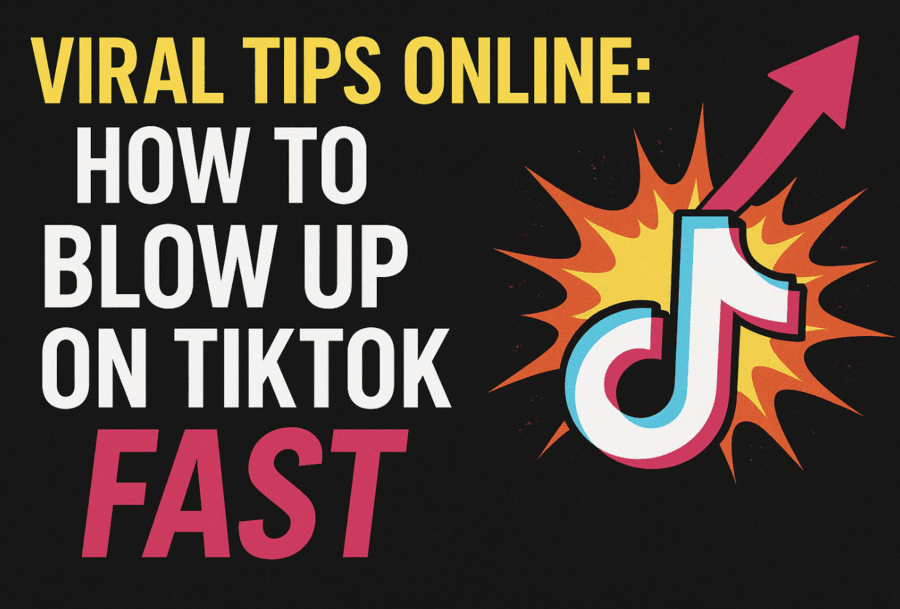
 How to4 months ago
How to4 months agoViral Tips Online – How to Blow Up on TikTok Fast
-

 How to4 months ago
How to4 months agoViral Tips Online – Secrets to Explode Your Instagram Reels & Posts

